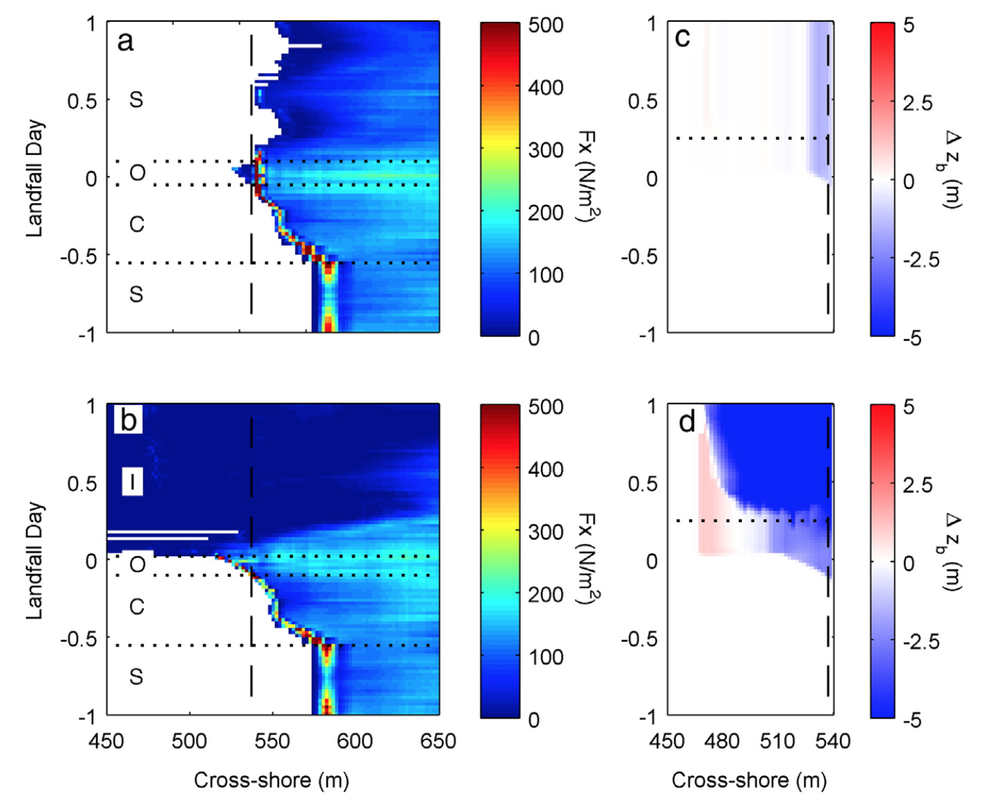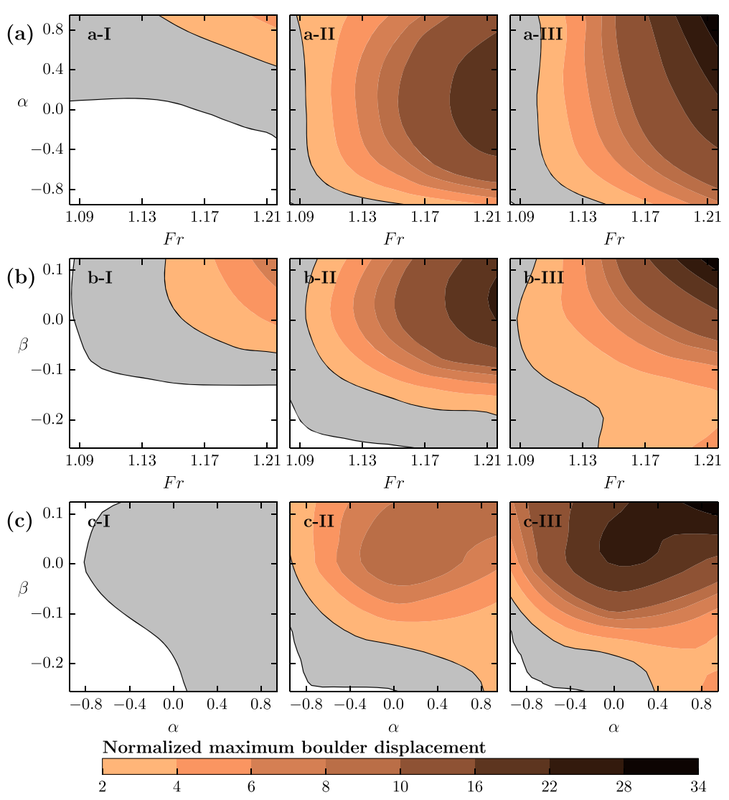COASTAL HAZARDS @ VIRGINIA TECH
Publication Highlights |
Morphological response of a sandy barrier island with a buried seawall during Hurricane SandySmallegan*, Irish, van Dongeren, & den Bieman
Coastal Engineering, 2016 This study focuses on the morphological response of Bay Head, NJ, a township on a barrier island fronted with a buried seawall. From XBeach simulations, the seawall protected Bay Head by effectively dissipating wave energy during the peak of the storm and from rapidly increasing bay water levels that flood the backbarrier region of the island. With the seawall present, wave attack is reduced on the island by a factor of 1.7 and prevents bay side flooding from causing significant morphological change on the island.
Figure shows cross-shore momentum flux (left) and bed change (right) in the presence (top) and absence (bottom) of the seawall.
|
Boulder dislodgement and transport by solitary waves: Insights from three-dimensional numerical simulationsZainali* & Weiss
Geophysical Research Letters, 2015 We employ three-dimensional numerical simulation of the hydrodynamics coupled with rigid body dynamics to study boulder dislodgement and transport by solitary waves. We explore the effects of three important nondimensional parameters on the boulder transport problem, including the Froude number Fr. Our results indicate that boulder motion is complex, and small changes in one of the nondimensional parameters result in significantly different behavior during the transport process and the final resting place of boulders.
Figure shows boulder displacement as a function of Froude number Fr, aspect ratio 𝛼, and submergence factor, 𝛽.
|
Most Cited
|
* Student author
Acknowledgements & Credits: This material is based upon work supported by the National Science Foundation, National Oceanographic and Atmospheric Administration's Sea Grant Program, U.S. Army Corps of Engineers, U.S. Department of Energy, National Commission on Energy Policy, Texas General Land Office, and Virginia Tech. Any opinions, findings, and conclusions or recommendations expressed in this material are those of the author(s) and do not necessarily reflect the views of these funding sponsors. Background photo courtesy of Sadatsugu Tomizawa (Creative Commons license CC BY-NC-ND 2.0). Abstract and figure (left) modified from Smallegan et al. 2016 (Coast. Eng.). Abstract and figure (center) from Zainali & Weiss 2015 (Geophys. Res. Lett.)
© 2019 Jennifer L. Irish, Robert Weiss, and Tina Dura. All Rights Reserved.



